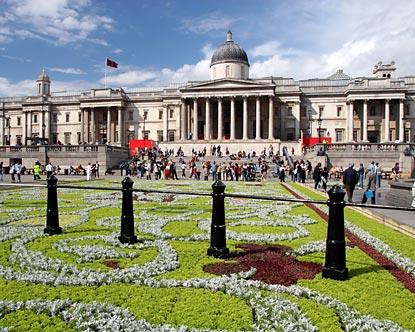The National Gallery explores the mystery of the face in the painting throughout history.

LONDON . – The mystery of the faces and how it was captured by artists throughout history is the subject of an exhibition that opens this Thursday the National Gallery, with paintings by masters such as Goya, Rembrandt, and Hogarth .
‘Making Faces’ is the third exhibition in a series of four devoted to specific aspects of painting, such as light and the idea of paradise (‘ Light ‘and’ Paradise ‘, inaugurated in 2003) and still life (‘ The Stuff of Life ‘), to be presented next year.
The exposure of faces, which contains 27 works from the National Gallery’s own museums and the English cities of Bristol and Newcastle, explores the different perspectives that can be addressed with a portrait, and “truth and lies” that sometimes contain.
“What is more real, the idealization of a face or a portrait of its imperfections?” Exposure poses.
The resemblance through different paths
“The portrait must contain some sort of resemblance to the model, says the curator, Alexander Sturgis, but that can be achieved in various ways, realism, caricature, the idealization …”
Some artists prefer to portray every last wrinkle, while others, such as Frank Auerbach, capture the essence through color or shape .
Highlighted in this small sample, it just takes a room at the London museum, the Francisco de Goya portrait of the lady became Madrid ‘Doña Isabel de Porcel’ in 1805, a lady whose vivacity blanket transfers its static pose.
The face can be represented in profile, as evidenced by ‘The Lady in Red’, painted in the fifteenth century by an unknown artist in the tradition Italian, or front, as a portrait of ‘Napoleon’ of the nineteenth century, which presents the emperor as an icon of power.
Pop Art
Andy Warhol preferred to manipulate photos and turn them into flattering portraits of famous ones, such as Joan Collins, 1985, present in this sample.
Catch a glimpse of expression, a smile instantly, no easy task for the painter. One of the works that best capture the spontaneous gesture is ‘Shrimp Girl’ (1740-5), William Hogarth, a smiling shrimp harvester which the artist immortalized with brush stroke agile and fluid.
And along comes the emotion expression, one of the biggest challenges for the creators, who came to haunt the painters of the seventeenth.
Besides religious imagery, ‘Making Faces’ shows’ The Feast of Belshazzar “(1635), Rembrandt van Rijn, a large group portrait that highlights the face of terror of the king of Babylon, that looks like a hand ghost writes a message on the wall that spells the end of his life and his reign.